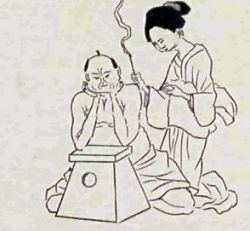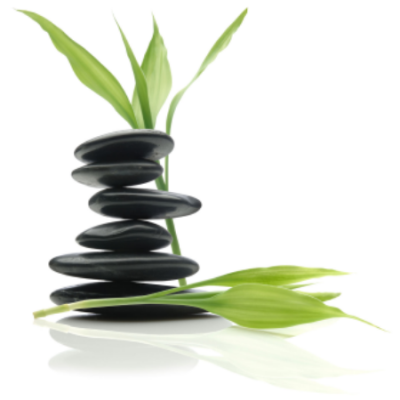Asian Bodywork Unlimited
Welcome
Welcome!
This has been a long time coming. I have slowly progressed to where I wanted my practice to be and I am still  growing. My career started as a Asian bodywork therapist studying primarily Japanese acupressure styles and Chinese Medicine. At the time there weren't many Acupressure or Shiatsu schools teaching anatomy or physiology that didn't require me to re-locate so I also attended Soma school of Clinical Massage in Chicago to fill in the missing pieces.
growing. My career started as a Asian bodywork therapist studying primarily Japanese acupressure styles and Chinese Medicine. At the time there weren't many Acupressure or Shiatsu schools teaching anatomy or physiology that didn't require me to re-locate so I also attended Soma school of Clinical Massage in Chicago to fill in the missing pieces.
I was content to do only Asian Bodywork but public opinions changed as to whether it would be legal or profitable so I studied Western Massage formally in its entirety. Only, I could not achieve the same results as with doing Chinese Medicine and Acupressure. Plus people were asking for more hands on treatments in a Massage kind of way, so I figured a balance between those who want more hands on stuff and those who were content with finger pressure and point work I studied Tui Na. I was satisfied that I was still learning more about Chinese Medicine and better ways to relieve physical body pain.
 Many of my teachers were acupuncturist. If they weren't acupuncturist they had a deep knowlege of Chinese Medicine theory and how the meridians (lines of energy that qi travel) worked. They had studied in China or Asia and brought back a little of the culture with them. They drank hot Sake and ordered Sushi and drank all kinds of tea that I had never heard of before. Some of them adapted the language, the food, as well as the bodywork styles. Not only was Asian Bodywork effective to treat pain, ease stress but for me it became an interesting cultural exploration. So I drink Sake, order Sushi, made my own Ramen Soup and my favorite tea is green that I get from a friend who got it from China. I can't say the name of the tea but is the best, freshest, greenest tea and I'm lucky whenever I can get it.
Many of my teachers were acupuncturist. If they weren't acupuncturist they had a deep knowlege of Chinese Medicine theory and how the meridians (lines of energy that qi travel) worked. They had studied in China or Asia and brought back a little of the culture with them. They drank hot Sake and ordered Sushi and drank all kinds of tea that I had never heard of before. Some of them adapted the language, the food, as well as the bodywork styles. Not only was Asian Bodywork effective to treat pain, ease stress but for me it became an interesting cultural exploration. So I drink Sake, order Sushi, made my own Ramen Soup and my favorite tea is green that I get from a friend who got it from China. I can't say the name of the tea but is the best, freshest, greenest tea and I'm lucky whenever I can get it.
Studying the culture and the bodywork traditions that I follow has enriched my personal practice allowing me to see things from a different perspective. You learn of the politics that affect bodywork and what the point names mean. Stomach 36 is called Leg Three Miles. When people became tired after long journey's walking they would apply moxa to ST 36 to get enough energy to make those last few steps. That point was used so often that people developed marks on the skin from its use. In Western Medicine a cold is just a cold and all colds are treated the same.  But in Chinese Medicine it could be Wind Heat or it could be Wind Cold condtion, in either case each has it own treatment protocol. We learn that treating a condition with the wrong protocol could either have no effect, or could make the condition worse. The same with bodywork techniques. You have to know what the person's condtion is before you can treat it. And all treatments are personalized to the individual.
But in Chinese Medicine it could be Wind Heat or it could be Wind Cold condtion, in either case each has it own treatment protocol. We learn that treating a condition with the wrong protocol could either have no effect, or could make the condition worse. The same with bodywork techniques. You have to know what the person's condtion is before you can treat it. And all treatments are personalized to the individual.
The final step in my career was to graduate Acupuncture school and soon I will be an acupuncturist once the paper work and such are out of the way. As a bodywork therapist my access into the world of Chinese Medicine had limits which were removed once I graduated Acupuncture school. Today, non-Chinese medicine trained people are using Eastern therapies. I feel that they are doing so without the foundation that those of us who studied Chinese Medicine have. Even though somethings get lost in translation between me and my experience of Chinese Medicine, even more is lost when Non-Chinese medicine trained people use Eastern therapies. But some people like that.
You can say that I grew up in Chinese Medicine. In the begining I was limited to things according to my knowlege and stature but now...all limits are off. I get to be the teacher and share some of the many things I have learned. At present I offer Acupressure, Auricular Medicine (Chinese Medcine for the ears, used in PTSD, Smoking Cessation and Obesity). I can also add cupping, moxibustion to any session.